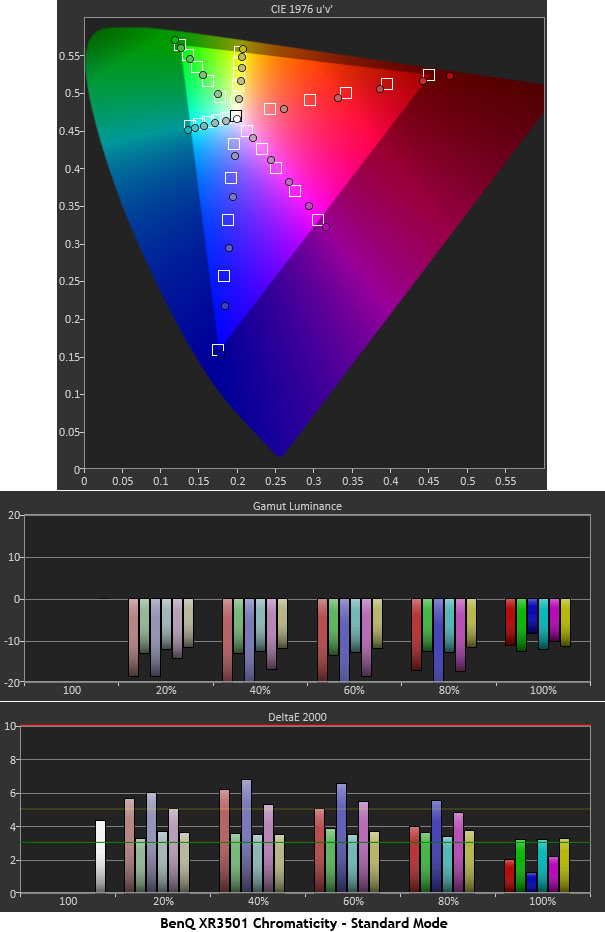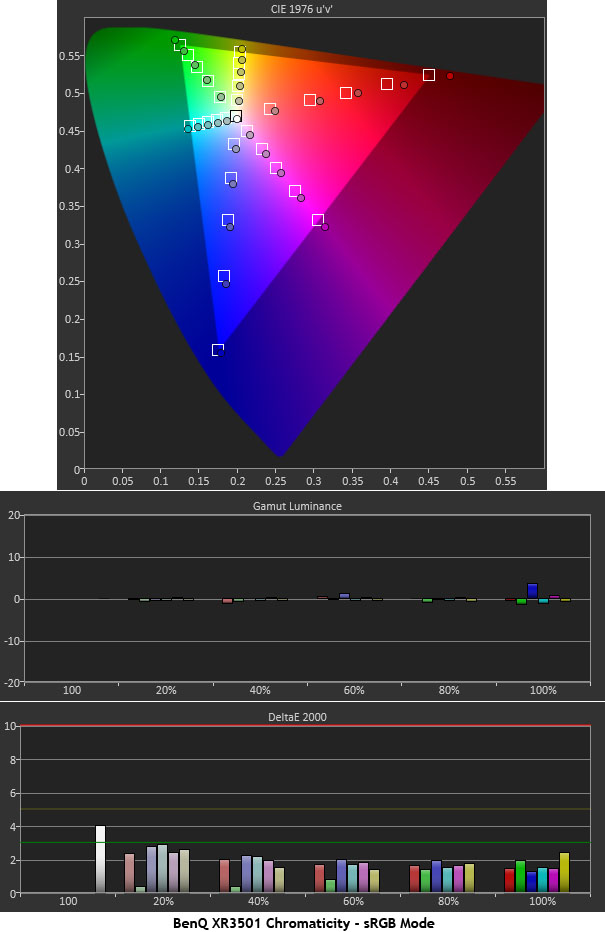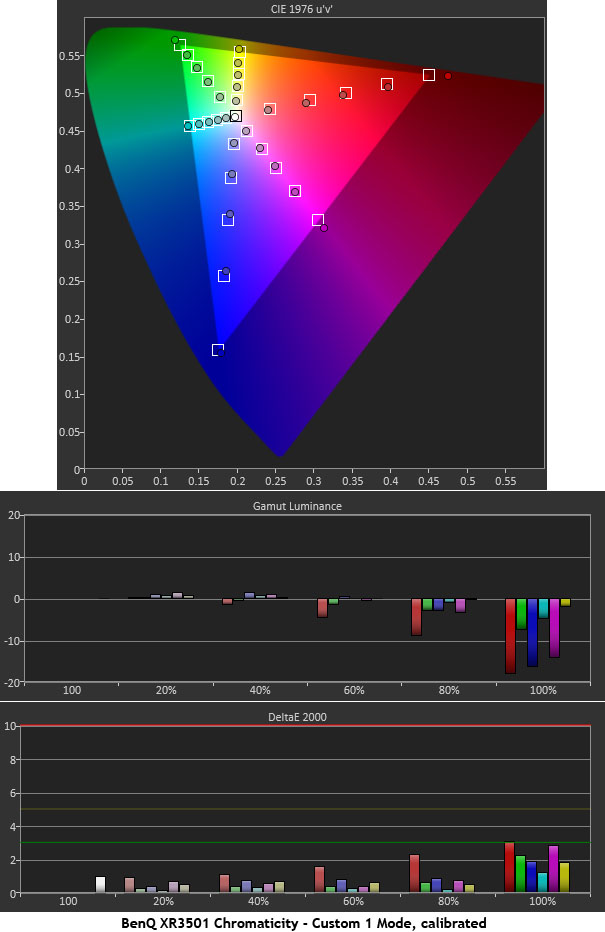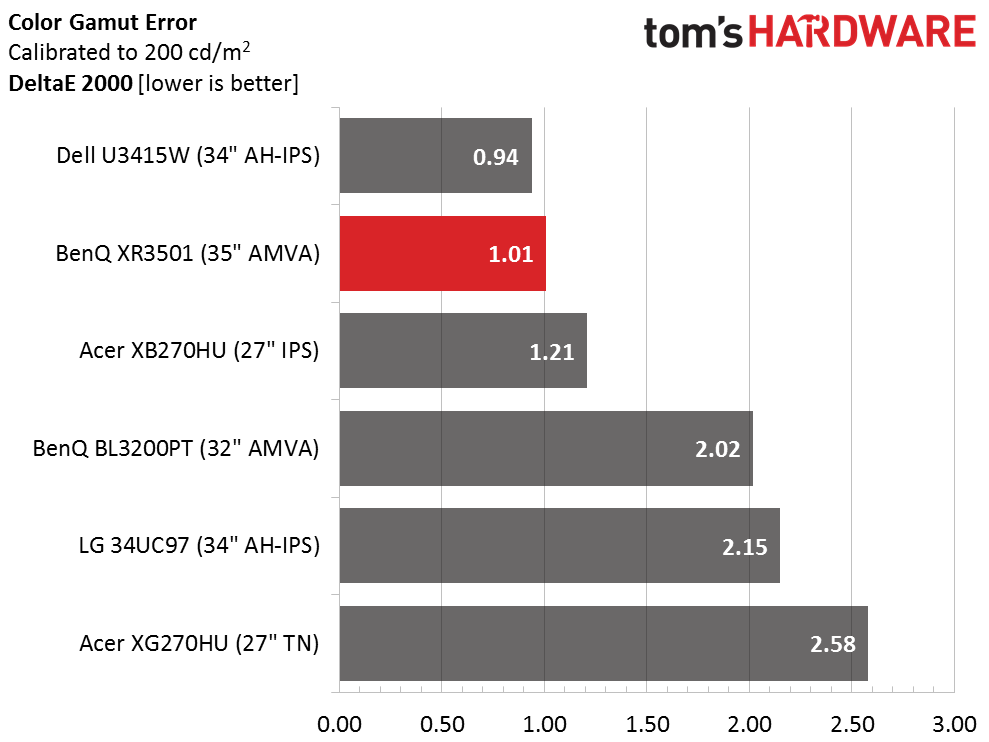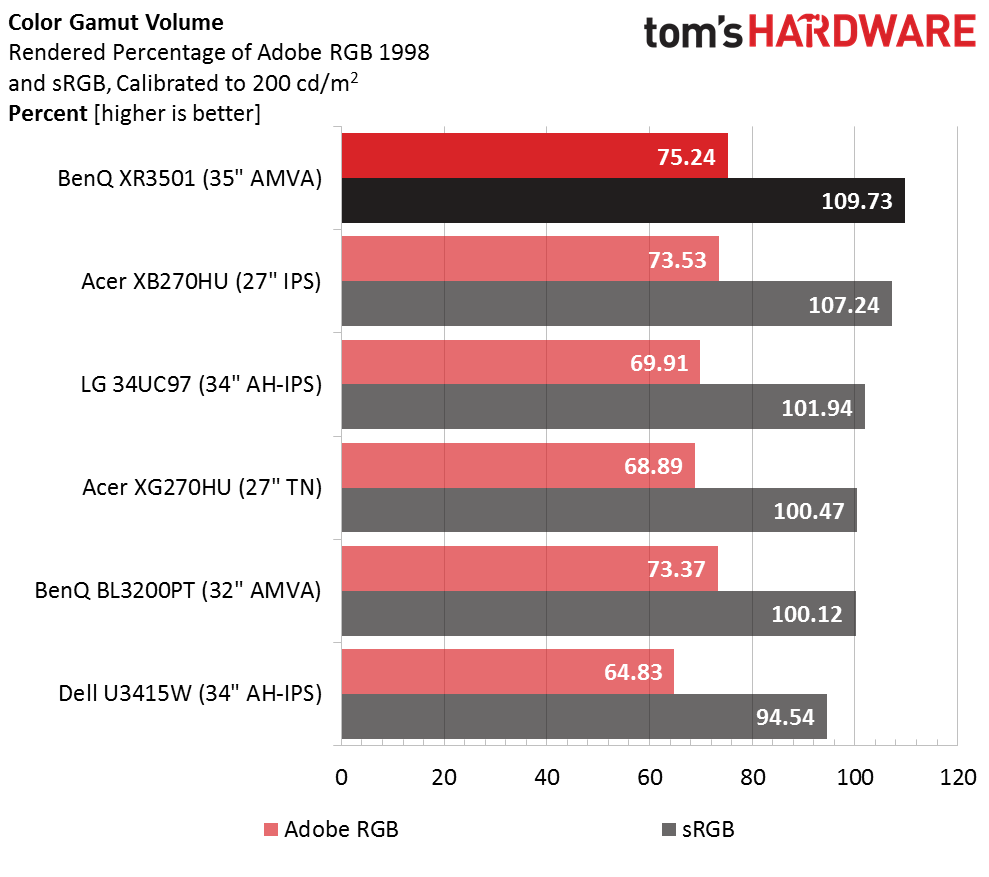BenQ XR3501 35-Inch Curved Monitor Review
BenQ's XR3051 high-contrast AMVA panel offers an impressive 2000R curvature and a 144Hz refresh rate along with some very unique attributes.
Why you can trust Tom's Hardware
Color Gamut And Performance
For details on our color gamut testing and volume calculations, please click here.
The XR3501's native gamut runs a bit over-saturated for all six colors. By lowering the luminance levels, BenQ has compensated somewhat but the resulting errors are all still visible to the naked eye. This is mainly due to a default gamma setting that is too dark and the Color Vibrance control, which is set a little too high. The average error here is 4.19dE.
By tightening up gamma tracking, the sRGB mode yields far better results in the gamut test. We're still seeing over-saturation but by returning color luminance to the correct level, overall errors are significantly reduced. Now the average error is 1.89dE, which is perfectly acceptable.
The luminance chart doesn't look quite as good as it did previously, but check out the color saturations. They are now on or near their targets at all points except for 100 percent red. By calibrating grayscale, setting the gamma preset to one and dropping Color Vibrance from 10 to 9, we've achieved the best-possible gamut result.
Now we return to the comparison group.
Since the XR3501 finishes just behind the U3415W, it's safe to say this is a pro-level result. None of the screens here have color issues but our review subject takes the crown for most color-accurate gaming monitor.
Gamut Volume: Adobe RGB 1998 And sRGB
Thanks to slight over-saturation in the three primary colors, the XR3501 offers a little extra gamut volume. If you're engaged in color-critical tasks, you'll need to calibrate your camera and printer to take advantage of the bonus. For gamers however, it means the brightest scenes will be just a tad more colorful.
Get Tom's Hardware's best news and in-depth reviews, straight to your inbox.
Current page: Color Gamut And Performance
Prev Page Grayscale Tracking And Gamma Response Next Page Viewing Angles, Uniformity, Response, Lag And Gameplay
Christian Eberle is a Contributing Editor for Tom's Hardware US. He's a veteran reviewer of A/V equipment, specializing in monitors. Christian began his obsession with tech when he built his first PC in 1991, a 286 running DOS 3.0 at a blazing 12MHz. In 2006, he undertook training from the Imaging Science Foundation in video calibration and testing and thus started a passion for precise imaging that persists to this day. He is also a professional musician with a degree from the New England Conservatory as a classical bassoonist which he used to good effect as a performer with the West Point Army Band from 1987 to 2013. He enjoys watching movies and listening to high-end audio in his custom-built home theater and can be seen riding trails near his home on a race-ready ICE VTX recumbent trike. Christian enjoys the endless summer in Florida where he lives with his wife and Chihuahua and plays with orchestras around the state.
-
Soul_keeper Everytime I see these display news/reviews I look for the power usage numbers and end up having to google for them.Reply
Can you start adding the power usage to the specs tables ?
thanks -
iam2thecrowe ReplyEverytime I see these display news/reviews I look for the power usage numbers and end up having to google for them.
I don't know, I have never looked at power usage specs when deciding which monitor to buy. Ever. It is expensive for only 1080 vertical pixels though. Would rather settle for a 60hz model with 1440 for a similar price.
Can you start adding the power usage to the specs tables ?
thanks -
rajeshgoblet 'The other curved displays we've seen sport a 3800R curvature, which means a radius of 3000 millimeters.' i think its a little bit typo. 3000 should be 3800 milimeters.Reply -
Shankovich Seems pretty good. Don't mean to sound like a whiner but for $1000 I would expect 10 bit colour on it. Then again loving that 144 Hz, can't complain about anything else really.Reply -
Realist9 1080p at 35 inches. No. 5 years ago? Maybe. Today? No.Reply
And someone dropping $1000 on their monitor is very unlikely to have a sub $300 video card.
No excuses. This should have been at least 1440p. I was excited until I saw that. -
eklipz330 this is clearly an attempt at milking the market. next year they will have a 1440p variant, and the year after they will finally incorporate freesync/gsync.Reply
they could have at least made it 1200p
